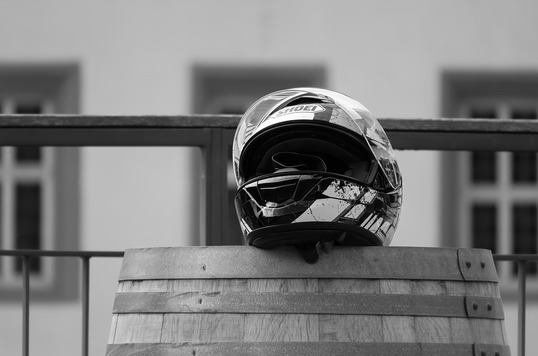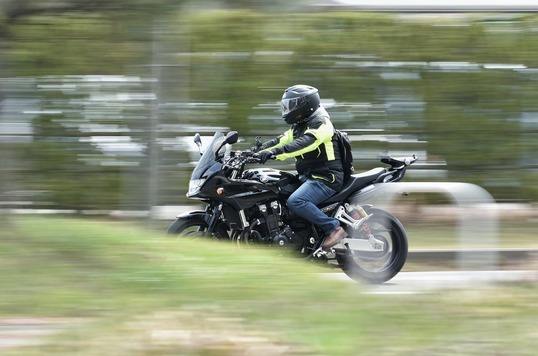Motorcycle helmets are supposed to be used all the time-rain, shine, mud pits, and heatwaves. It has the most critical job (protecting the skull and its contents). Knowing how to clean and preserve your motorcycle helmet will not only protect you from having a dank inner lining around your ears, it will also help to prolong your helmet's lifespan and get rid of stinky smell. Some steps on how to clean a motorcycle helmet are as follows:

Step 1: Motorcycle helmet cleaning materials
Getting things in order from the beginning, as with any production, can go a long way towards making the best use of your time when cleaning a motorcycle helmet. In order to clean the helmet, you should have a soft towel, toothbrush, shampoo, and warm water. These materials will help you to clean your helmet like a pro.
Step 2: Remove any electronics and external accessories
You should make sure to remove all internal electrical devices such as speakers, antennas, batteries, and the Bluetooth communicator units they mount before you wash a motorcycle helmet. In addition, whether you're working on a dual-sport or off-road helmet that has a peak, removing it and washing it separately is much simpler.
Step 3: Remove the helmet's interior
Although many companies have somewhat different styles, it rarely takes more than a few strategic tugs to remove the internal liner and cheek pads. Comfort pads and liners are attached with snaps in most situations, but others use hook-and-loop fabrics or even magnets. Be sure to check the owner's manual for details. Put these on the side until you have cut the cheek pads and mainliner.
Step 4: Clean the interior lining
The interior of a motorcycle helmet is always the one that needs to be cleaned the most. The padding of your motorcycle helmet soaks up lots of grime, from facial sweat to hair spray. Fill a sink, shower, or bucket with warm water and baby shampoo while washing the lining of your motorcycle helmet, and then dunk, rinse, and massage each piece of your helmet liner in the soapy water. For this job, baby shampoo works well as it is super soft, but also clearly formulated to scrub away sweat and hair oil. Let the helmet liner and cheek pads air dry when done.
Step 5: Clean the motorcycle helmet's exterior
Take the face shield off and set it aside after removing the damp rag that you put on the helmet. To gently work your way around the surface of the helmet, use a new, damp soft towel to brush away any remaining soil. Always make careful to use only warm water when washing your motorcycle helmet. The exterior of your helmet can be affected by some solvents and cleaning solutions. For hard-to-reach places, the toothbrush will come in handy.
Step 6: Clean the face shield
Most typical face shields have a protective coating of some sort. For that cause, and much like the outside of your helmet itself, when cleaning a motorcycle face shield, you can never use anything other than warm water. Ultimately, just using a damp soft towel and softly massaging away any dirt, grit, or smudges is the easiest way to wash a motorcycle face mask. As for the outside of the helmet, leaving a damp rag draped over the face shield for several minutes softens the remnants of the crusty bug and renders it soft, and makes the job easier.
Step 7: Wipe down the internal sun shield
If there is an internal sun shield on your helmet, it is actually not very dusty. Fast sprits of water and wipe down with a microfiber towel will do the trick if the drop-down visor has become a little dirty over time, though. It is better to keep it in place when washing unless you are stubborn in your determination to remove the whole sun visor since it can be a bear to bring back into place once removed.
Step 8: Reassemble the helmet
Reassemble your helmet starting with the dry liner and cheek pads. Reattach your face shield and any other pieces that you removed prior to cleaning.
Also Read:
BEST BUDGET FITNESS TRACKERS IN NEPAL
HOW TO FREE UP YOUR IPHONE AND ANDROID PHONE FULL SPACE
SAMSUNG MAY DISCONTINUE HIGHEND GALAXY NOTE SMARTPHONES5
ENGINE BRAKING BETTER THAN YOUR FRICTION BRAKES? PROS AND CONS
5 BIKE CARE AND MAINTENANCE TIPS TO KEEP YOUR BIKE FOREVER NEW
ELECTRIC VEHICLES | CARS | BIKES: ADVANTAGES AND DISADVANTAGES
Compiled by :

Upasana Poudel
















